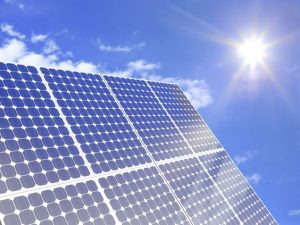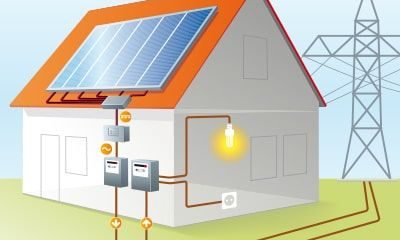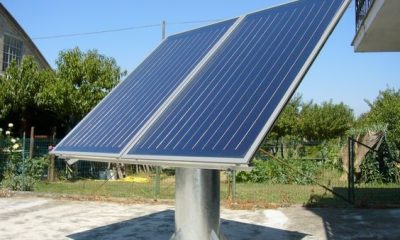Home Solar Energy
How a Solar Panel Generates Energy: An In-Depth Explanation

How a Solar Panel Generates Energy: An In-Depth Explanation
Introduction
Solar energy has become a crucial player in the pursuit of clean and sustainable power sources. At the heart of this revolution are solar panels, which harness sunlight to produce electricity. In this article, we will explore the intricate process of how a solar panel generates energy, providing a comprehensive understanding of this eco-friendly technology.
Solar Panel Components
Before diving into the energy generation process, it’s essential to grasp the key components of a solar panel:
- Photovoltaic Cells: These are the heart of the solar panel, responsible for converting sunlight into electricity.
- Glass Cover: Protects the photovoltaic cells from external elements while allowing sunlight to pass through.
- Backsheet: Provides insulation and structural support to the panel.
- Frame and Junction Box: The frame holds everything together, and the junction box contains wiring connections.
The Photovoltaic Effect
The magic of solar panels lies in the photovoltaic effect. When sunlight hits the photovoltaic cells, it excites electrons within the cell. This excited state causes the electrons to move, creating an electric current. This process is the foundation of solar panel energy generation.
Solar Panel Working Principle
Solar panels are made up of multiple photovoltaic cells connected in a specific pattern. These cells are usually made of silicon, which is a semiconductor. When sunlight strikes these cells, it releases electrons from the silicon atoms, generating direct current (DC) electricity.
Inverter and DC to AC Conversion
To power our homes and devices, we need alternating current (AC) electricity. This is where inverters come into play. They convert the DC electricity produced by the solar panels into the AC electricity we use in our daily lives.
Energy Storage (Optional)
Some solar panel systems incorporate batteries to store excess energy for use when the sun is not shining. Grid-tied systems, which are connected to the electric grid, can also send surplus electricity back to the grid, earning credits.
System Efficiency
Several factors influence the efficiency of a solar panel system, including the angle and orientation of the panels, temperature, and shading. Solar tracking systems, which follow the sun’s path, can optimize energy production.
Environmental Impact
The environmental benefits of solar energy are substantial. Solar panels produce clean energy, reduce greenhouse gas emissions, and contribute to a greener future. Using solar panels helps combat climate change and reduce our carbon footprint.
Maintenance and Longevity
Solar panels require minimal maintenance but can benefit from periodic cleaning. The typical lifespan of solar panels is 25 to 30 years, making them a long-term investment in sustainable energy.
How Does Solar Panel Generate Energy?
How a Solar Panel Generates Energy
Step 1: Sunlight hits the solar panel
Each solar panel is made up of many individual solar cells. Each solar cell is made up of two layers of semiconductor material, such as silicon. When sunlight hits the solar cell, the photons of light energy are absorbed by the semiconductor material.
Step 2: Electrons are freed
The energy from the photons of light frees electrons from their atoms in the semiconductor material. This creates an electric field across the solar cell.
Step 3: Electrons flow through the circuit
A metal grid is attached to the top of the solar cell and a metal backing is attached to the bottom. This creates a circuit. The electrons freed by the sunlight flow through the circuit, creating an electric current.
Step 4: The electric current is converted to alternating current (AC)
The electric current generated by the solar panel is direct current (DC). Most homes and businesses use alternating current (AC). An inverter is used to convert the DC current to AC current.
Step 5: The AC current is used to power your home or business
The AC current generated by the solar panel can be used to power your home or business directly. If you generate more electricity than you need, it can be sold back to the utility company.
Analogy:
Imagine a solar cell as a small water wheel. When sunlight hits the solar cell, it’s like water hitting the water wheel. The water wheel turns, generating electricity.
Solar panels generate electricity by converting the sun’s energy into electrical energy. This is done using a semiconductor material, such as silicon. When sunlight hits the solar cell, it frees electrons from their atoms. These electrons flow through a circuit, generating an electric current. The electric current is then converted to alternating current (AC), which is the type of electricity used by most homes and businesses.
Conclusion
In conclusion, solar panels are remarkable devices that convert sunlight into electricity through the photovoltaic effect. Understanding the components and working principles of solar panels allows us to appreciate their role in the transition to clean and renewable energy sources. As we strive for a greener future, solar panels play a significant part in reducing our reliance on fossil fuels and mitigating climate change.
By harnessing the power of the sun, we are not only generating clean energy but also building a sustainable world for future generations. Embracing solar energy is a step toward a brighter, cleaner, and more environmentally friendly future.






















